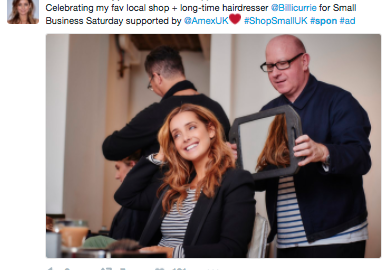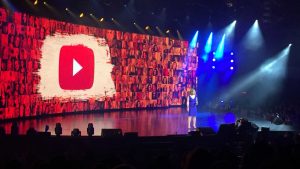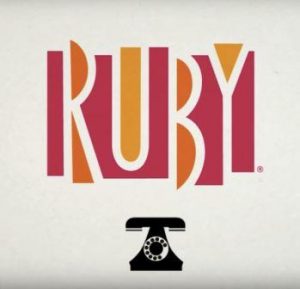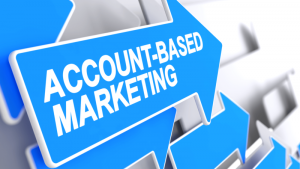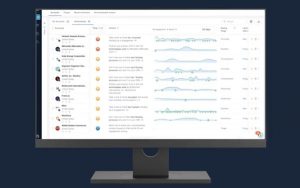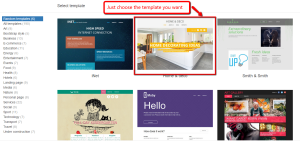The adoption and prominence of digital marketing has grown by leaps and bounds year after year. Through digital marketing, consumers have the world at their fingertips as physical barriers and limitations are have been significantly decreased. A global marketplace has been created, and businesses big and small compete on the same playing field. 2017 promises to be another year where digital marketing plays an important role in growing business and improving brand awareness.
With a new year comes new trends, and we’ve compiled the top ten small business digital marketing predictions for 2017. Read through this list to see what’s up-and-coming and how to use these marketing techniques to benefit your small business.
Cross-device marketing
Most people have at least two digital devices, such as a smartphone, tablet, or laptop, and marketing across channels and across devices is the new standard. Thus, businesses must meet the customers where they are. Marketing endeavors then need to be coordinated so they have a consistent feel across multiple devices with various resolutions and screen sizes. Mobile optimization of your website is the first must-have, followed by establishing email settings for both desktop and mobile readers.
Not only does this mean that your marketing campaigns need to be optimized for desktop and mobile, but that your tracking metrics just multiplied. Keeping a clear count of ROI per campaign, per device is integral to knowing your success rate and where your audience is most responsive.
Influencer marketing
Influencer marketing is set to explode this year. Consumers use and trust social proof of brands and products. If someone’s favorite celebrity or blogger promotes a product, he is much more inclined to trust that endorsement rather than an advertisement or email campaign directly from the brand. A timely example is well-known UK celebrity Louise Redknapp, who featured her support for Small Business Saturday by visiting a local hairdresser. The #spon and #ad hashtags indicate this was a paid endeavor, but nonetheless reflect her ringing endorsement for the business.

image courtesy of Louise Redknapp
Even if your business has a tiny marketing budget, small businesses can barter and build relationships with influencers that don’t necessarily require money as payment. Access to your followers and cross-promotion on your brand’s website can often suffice for smaller influencers.
Mobile first – if not only
Mobile takes the cake in 2017, which really comes as no surprise. Everything from your business website to email campaigns should be formatted for mobile, and if in doubt, optimize for mobile before desktop. Most people are viewing websites, reading email, and perusing social media on their mobile devices. This year, you must go to where your viewers are, and change your tune to mobile. Your business will increase engagement and conversion by having mobile-compatible content.
Native advertising
Native advertising dollars are destined to spike this year. With more and more consumers opting out of advertisements and muting traditional ads, native advertising gives businesses a means of reaching their audiences in a new way. In case native advertising is totally new to you, or you just need a refresher, native advertising is when a business sponsors content on a website. This way, the viewer is in control of accessing the content and is not bombarded with unwanted information.
Below is an example of native advertising on LinkedIn. SAS paid LinkedIn to advertising this content and mark it as sponsored. It then shows up in their target audience’s feed. Users can choose to click the URL or even follow the company. This puts the reader in control and doesn’t bombard the consumer. It’s a win-win: interested parties opt to read the information, and your business does not appear like spam to those who choose not to view your content.

image courtesy of LinkedIn
As we’ve said before, valuable and useful content does the best with consumers, and native advertising gives brands the opportunity to showcase useful material to their audience in locations that they don’t own, such as news aggregators, blogs, and other publications.
‘Of the moment’ is in
No longer is automation and social scheduling the preferred engagement tactic. Live streaming has come to town and it’s here to stay. People are jumping on the bandwagon for this ‘of the moment’ video where real time interactions are encouraged.
This doesn’t mean your entire social media marketing strategy needs to be revamped, but consider adding live streams to your playbook. It will add variety to your social presence and inspire followers to tune in more frequently.
Personalization
Increased personalization goes hand in hand with cross-device marketing. Consumers expect personal touch and recognition, no matter where they fall in the customer lifecycle. This kind of customization goes beyond including a first name in a marketing email, though. It requires your marketing efforts to address consumer behaviors, spending habits, device preferences, time zones, and languages. Embrace your audience’s points of differentiation and segment your customers as best as you can. They’ll respond better to fewer, personalized messages than blanket email blasts.
Prioritize engagement over mass-quantity content
With the daily barrage of content, it’s more important than ever to develop valuable and engaging material for your audience. Throw out a quantity-heavy content strategy, and focus on fewer, quality pieces that can be repurposed. Infographics, blog posts, and branded visuals are all excellent ways to build original content that can easily be broken down and used differently for weeks and months to come.
Developing content your audience wants to read is the top priority. If your business publishes content that falls flat, it runs the risk of being classified as spam or inauthentic. A pro tip is to establish a content strategy and editorial calendar to monitor what content works best for your customers.
Social and data analytics step up to the plate
Although many brands and businesses have adopted social media as part of their marketing strategy, the majority have neglected to use their social and data analytics. Well, 2017 is the year that all changes. With the onslaught of marketing and advertising in the digital world, understanding what your target audience responds to and on which platforms is of critical importance to small business survival. Data is a necessary part of your social media strategy, and can no longer be ignored.
Anticipate a rise in small businesses tapping into their Facebook Insights, Twitter’s Dashboard app, and Instagram analytics in service of meeting their customers’ needs. These platforms make it easy to understand and access relevant insights, so you don’t need to be a data wizard to make sense of the information. Invest in understanding these metrics and your business will thank you.

image courtesy of Social Media Examiner
Storytelling
A longstanding principle of good writing is to show, not tell. Descriptive language crafts a scene the reader can envision, and allows them to visualize the idea and story you’re trying to convey. It becomes an interactive experience rather than passive consumption. Now more than ever, using storytelling to attract your prospective clients and keep loyal customers is required of brands. Soft advertising is what consumers want, and storytelling affords brands that flexibility.
Think about what your business is trying to achieve with specific campaigns, then frame the message from the customer’s perspective. Customers are more savvy and don’t want harsh advertisements that bark orders and calls to action. Instead, weave a tale that pulls them along your brand journey in a subtle way. Create a story that requires multiple Instagram posts that followers must revisit to see the entire campaign unfold. This is what consumers will want from brands in 2017.
Video
It feels like every year the claim, “video is the next frontier”, is made. However, 2017 truly promises to be the year of video for many reasons. Nearly every social media platform has integrated video capabilities into its core offerings, and for good reason. People are consuming video like mad. In 2016 alone, Facebook claims 100 million hours of video are watched on its platform each day; and that’s just one social media site!
With this overall adoption of video, small businesses should consider using it as part of their social media marketing efforts to improve engagement and customer loyalty. You don’t have to be a tech wizard to master video production. Give it a try and see how your ROI improves.
Make 2017 your best year yet for your small business. Consider these predictions and incorporate the ones that work for your industry and capacity. We can’t wait to see which trends take off and what surprises pop up over the course of the year.
Digital & Social Articles on Business 2 Community(64)
